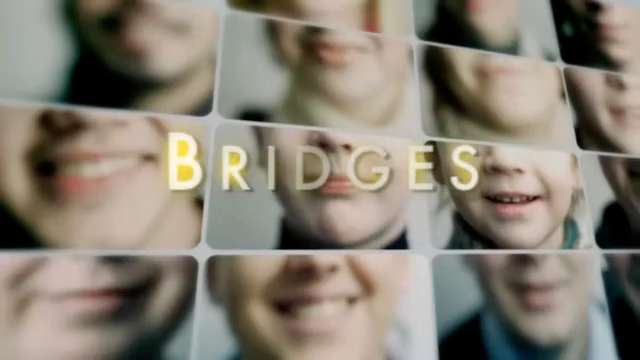Everything You Need to Know About Dental Bridges
Are you dealing with tooth loss and wondering how to restore your smile? Dental bridges might be the solution you need. At The BLVD Dentist in Lancaster, California, Dr. Martin Orro specializes in placing dental bridges to correct tooth loss and prevent adjacent teeth from shifting out of place. Our bridges help maintain oral health, enabling you to eat and speak comfortably. Here’s what you need to know about dental bridges, their types, and what to expect during the procedure.

What Are Dental Bridges?
Dental bridges are a popular and effective way to replace missing teeth. A bridge consists of a replacement tooth or teeth attached to a dental crown on either side of the gap. These crowns cover the adjacent natural teeth or implants, providing stability and support for the replacement teeth. The bridge fills the space between missing teeth, restoring your smile and functionality.
Types of Dental Bridges
1. Conventional Fixed Bridges
The most common type of dental bridge, the conventional fixed bridge, involves placing crowns on the natural teeth adjacent to the gap. These crowned teeth serve as anchors for the bridge. This type of bridge is a permanent solution that provides a strong and stable replacement for missing teeth.
2. Cantilever Bridges
Cantilever bridges are used when only one adjacent tooth anchors the bridge. This type of bridge typically consists of two crowns connected to a single prosthetic tooth. Cantilever bridges are particularly suitable for restoring teeth toward the front of the mouth, as they experience less pressure from chewing forces.
3. Temporary Bridges
Your dentist will place a temporary bridge while you wait for your permanent bridge to be created. While not as sturdy as the final restoration, a temporary bridge serves to maintain your smile and functionality while you wait for the permanent bridge. The temporary bridge is easily removable and designed to be a temporary solution until your permanent bridge is ready.
What to Expect During the Procedure
1. Tooth Preparation
During your visit to our office, the first step involves preparing the adjacent teeth for crown placement. This process includes removing some of the outer structure of the teeth to ensure a proper fit for the crowns. Proper preparation is crucial, as the crowns need to support the entire bridge.
2. Impressions and Fabrication
After preparing the teeth, Dr. Orro will take an optical scan or impression of your mouth. The digital or analog mold is sent to a dental lab, where technicians fabricate your custom bridge. The goal is to create a natural-looking bridge that fits comfortably and securely.
3. Final Fitting
Once your bridge is ready, you’ll return to our office for the final fitting. During the final fitting, we will ensure that the bridge fits properly, aligns correctly, and feels comfortable. Any required adjustments will be made as needed to ensure optimal function and comfort.
Are You Ready to Restore Your Smile?
If you’re considering dental bridges and want to learn more about how they can benefit you, schedule a consultation with Dr. Martin Orro at The BLVD Dentist in Lancaster, CA. We are committed to providing personalized care and high-quality restorations to help you achieve a beautiful and functional smile.
Contact us today at (661) 942-1124 to book your appointment and take the first step toward a complete, confident smile!

A bridge is a non-surgical way to replace one or many teeth. A bridge uses the adjacent teeth as anchors to support the missing tooth or teeth. With today’s dental advancements, a bridge can be fabricated in a fairly short period of time, using a metal or nonmetal foundation. Don’t let that missing tooth affect the way you speak, eat, and smile. Bridges yield immediate results that last a lifetime. Ask your dentist what type of bridge may be right for you.
When would a dental bridge be recommended over other tooth replacement options?
A dental bridge is recommended when you have one or more missing teeth, especially if the surrounding teeth are healthy enough to support the bridge. It is ideal for those who prefer a non-surgical option and want to restore their smile and chewing function quickly. Dental bridges can be a good choice if adjacent teeth need crowns for other reasons. They help prevent teeth from shifting, maintain facial structure, and improve speech and eating capabilities. Dr. Orro will evaluate your specific situation and recommend a bridge if it meets your dental needs and preferences.
How is a dental bridge held in place?
A dental bridge is held in place by anchoring it to the healthy teeth on each side of the gap in your smile, known as abutment teeth. These teeth are prepared by eliminating a minimal amount of enamel allowing the crowns to be placed in a way that blends seamlessly into your smile. The bridge, which includes the false teeth (pontics) and crowns, is then cemented onto the abutment teeth, creating a stable and secure restoration. In some cases, dental implants can be used as abutments instead of natural teeth, providing additional support and stability for the bridge.
Am I a good candidate for a dental bridge?
You might be a good candidate for a dental bridge if you have one or more missing teeth with healthy teeth or dental implants on either side of the gap to support the bridge. Good oral hygiene and healthy gums are essential to ensure the longevity of the bridge. Dr. Orro will assess your overall oral health, the condition of your remaining teeth, and your personal preferences before recommending a dental bridge. If you meet these criteria and seek a non-surgical solution for tooth replacement, a dental bridge might be an excellent option for you.
Does getting a dental bridge hurt?
Getting a dental bridge typically involves minimal discomfort. The process starts with preparing the abutment teeth, which may involve some drilling to reshape them. This step is usually performed after we have applied local anesthesia, resulting in a painless experience. After the teeth are prepared, impressions are taken to create the bridge. You might experience some sensitivity or mild discomfort once your anesthesia has dissipated, but this discomfort can often be minimized using over-the-counter pain relievers. The final placement of the bridge is usually quick and painless, and any residual discomfort should subside shortly after the procedure.
How long does it take to get a dental bridge?
The process of getting a dental bridge usually takes two to three dental visits over a few weeks. During the first visit, Dr. Orro will prepare the abutment teeth, take impressions, and place a temporary bridge to protect the prepared teeth. The impressions are sent to a dental lab, where the permanent bridge is custom-made to fit your mouth. This process typically takes one to two weeks. Once the permanent bridge is ready, you will return to Dr. Orro for a final fitting and adjustment before the bridge is cemented in place.
Are there situations where a dental bridge would not be recommended?
A dental bridge may not be recommended if the abutment teeth are not strong enough to support the bridge, if you have gum disease, or if there is significant bone loss in the jaw. In such cases, alternative tooth replacement options, such as dental implants or partial dentures, might be more suitable. Additionally, if you prefer a longer-lasting solution and are a candidate for dental implants, Dr. Orro might recommend implants over a bridge. It is essential to consult with our team to determine the best treatment plan based on your oral health and personal needs.
Which is better – a dental bridge or dental implants?
The choice between a dental bridge and dental implants depends on various factors, including your oral health, budget, and personal preferences. Dental implants are often considered a superior option because they are a permanent solution that mimics the function and appearance of natural teeth. They do not require altering adjacent teeth and help preserve jawbone density. However, implants require sufficient bone structure and a longer healing period. Bridges, on the other hand, provide a quicker, non-surgical solution and are ideal for those who prefer not to undergo implant surgery. Dr. Orro will help you decide which option is best for you based on your unique circumstances.





